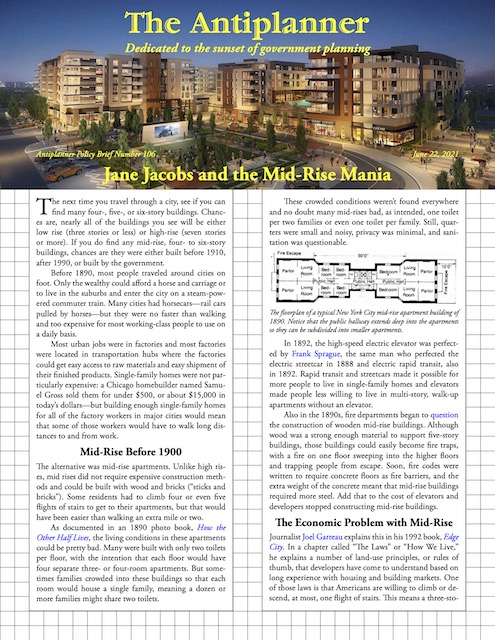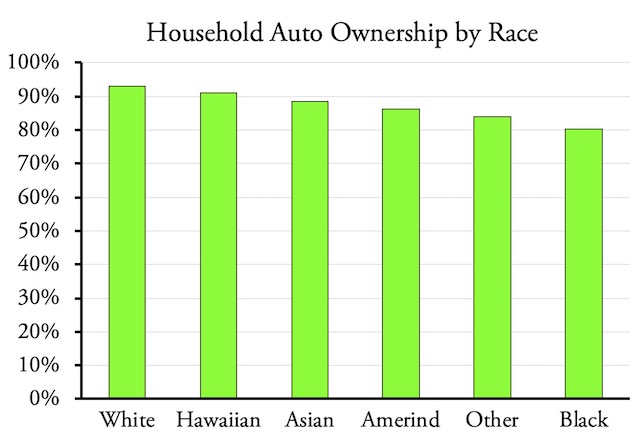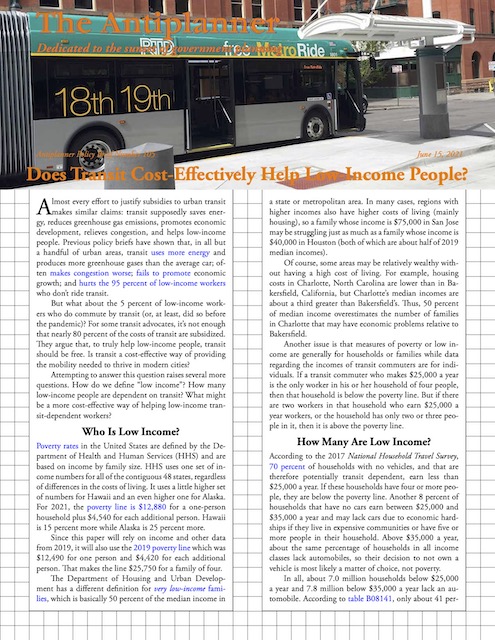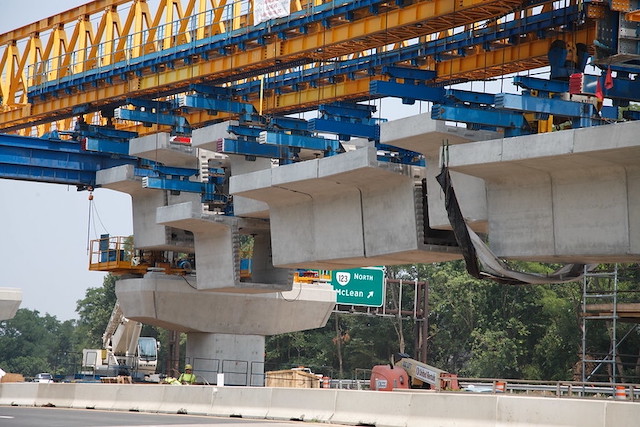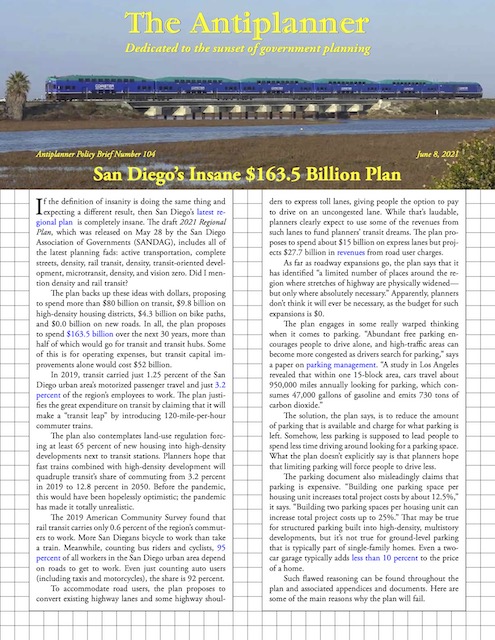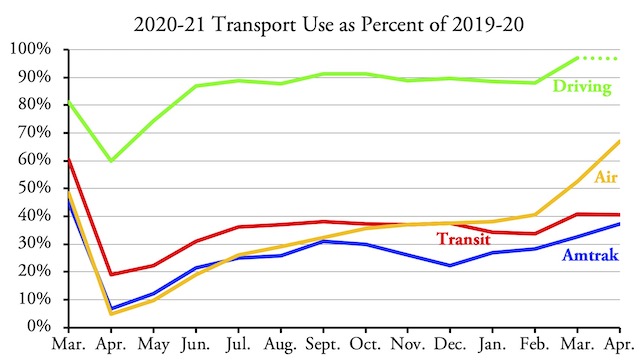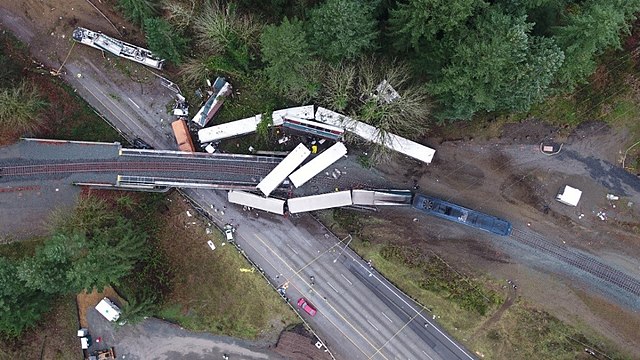Last month, the San Jose city council approved a plan for Google to practically double the size of downtown San Jose. The plan allows Google to build up to 7.3 million square feet of office space, 4,000 to 5,900 housing units, 1,100 hotel/extended stay units, and half a million square feet of retail or cultural space on 80 acres of land located just west of downtown. The site is immediately adjacent to the San Jose train station, which serves commuter trains, light rail, and Amtrak.
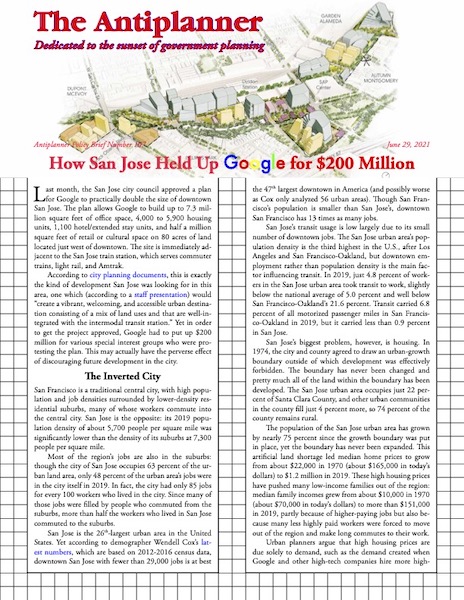 Click image to download a four-page PDF of this policy brief.
Click image to download a four-page PDF of this policy brief.
According to city planning documents, this is exactly the kind of development San Jose was looking for in this area, one which (according to a staff presentation) would “create a vibrant, welcoming, and accessible urban destination consisting of a mix of land uses and that are well-integrated with the intermodal transit station.” Yet in order to get the project approved, Google had to put up $200 million for various special interest groups who were protesting the plan. This may actually have the perverse effect of discouraging future development in the city. Continue reading


